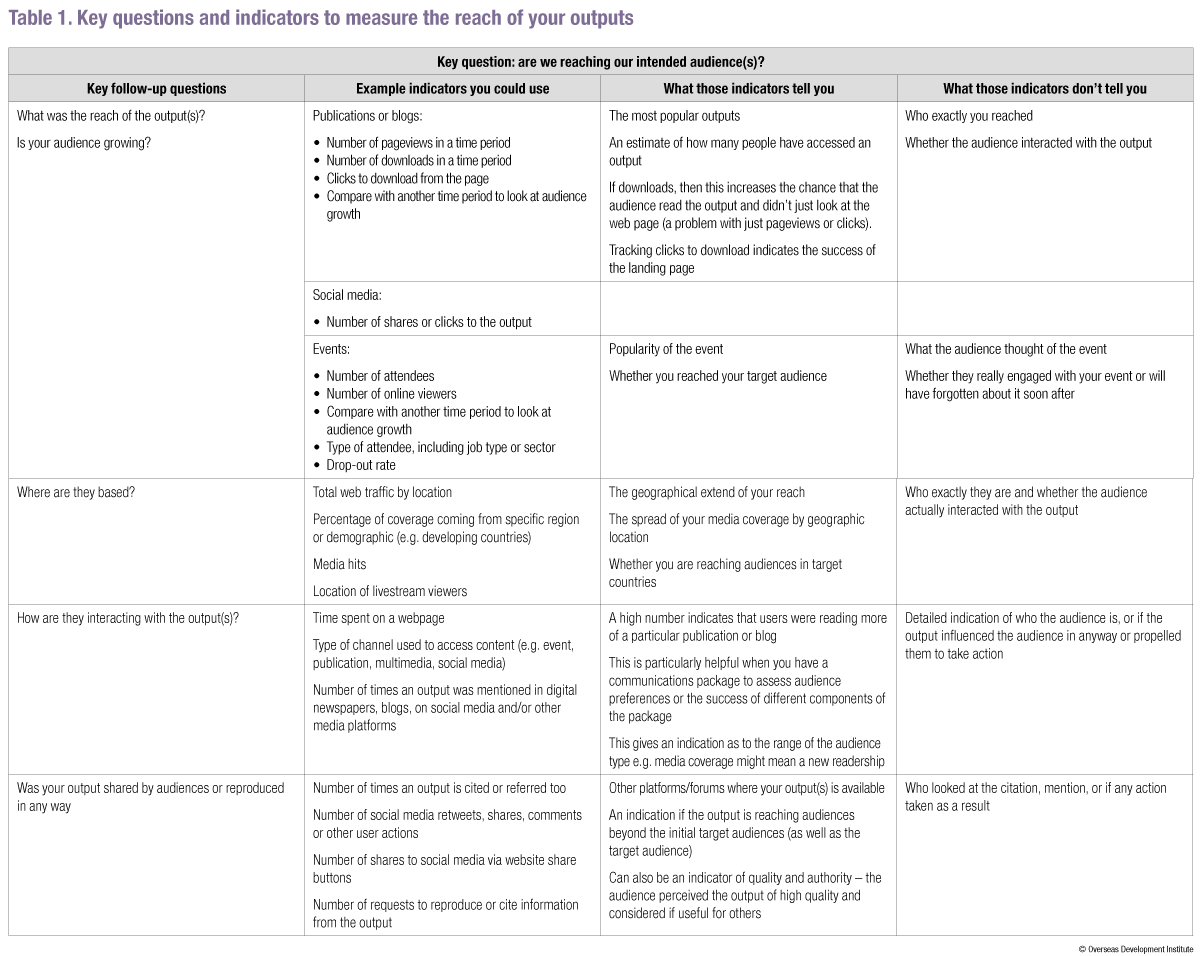How to measure the reach of your outputs
Definition of reach: ‘The breadth and saturation of an output’s communication/dissemination. It describes the extent to which information is distributed, redistributed, and referred to by organisations and individual users’.
Outputs are designed to reach a target audience. Measuring reach is the most basic level in communications MEL and particularly useful when thinking about the distribution and breadth of communications. For example, did your output (e.g. a report) reach a wide audience?
However, there are limitations to just looking at reach. For example, you don’t necessarily know if the audience has read your report or even if it has influenced them in anyway. It can be difficult to minimise these limitations, but it is important to be aware of them and highlight them to those using the data.
In addition, communications is not always about quantity or breadth; reach could mean looking at whether a communications output or activity has reached one small key audience, which in some cases could even be an individual.
Most people focus on reach because it is the easiest to track.
Examples of what you can use this information for:
- to track the overall reach of an output
- to measure the popularity of different outputs
- to monitor where website visitors are based, their gender or age
- to demonstrate external interest in a campaign, or the scale of reach
- to provide internal benchmarking
- to understand what type of output works for different audiences
Example tools to gather data:
- Websites: Google Analytics
- Media: Meltwater, Mention, Cision
- Social media: Twitter analytics, Facebook analytics, Hashtracking
- Events: Eventbrite, Event Smart, Eventzilla
- Newsletters: Mailchimp, SendinBlue
- Videos: YouTube analytics, Vimeo analytics
